Search Images
Browse Content (p. 1759)
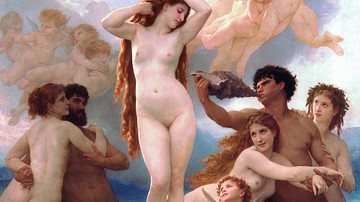
Image
The Birth of Venus by Bouguereau
The Birth of Venus (1879 CE) by William-Adolphe Bouguereau (1825–1905 CE). Musée d'Orsay, Paris.
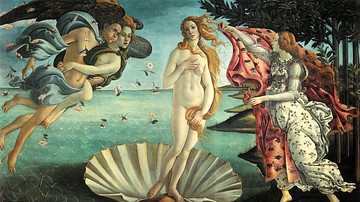
Image
The Birth of Venus by Botticelli
By Sandro Botticelli (1445–1510 CE), commissioned by Lorenzo and Giovanni di Pierfrancesco de'Medici for Villa di Castello (?).

Image
Ancient Greek Clapper
A reconstruction of the clapper (Krotala), an ancient percussion instrument made from cane, shell, wood or metal. Usually held in each hand with thumbs and middle finger through the leather loops for stability, they were played much like...
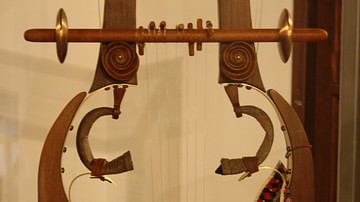
Image
Ancient Greek Kithara
A reconstruction of the ancient Greek stringed instrument. It was associated with the god Apollo, regarded as the most gifted player of the instument and patron of musicians. (Museum of Ancient Greek Musical Instruments, Katakolon, Greece).

Image
Ancient Greek Forminx
A reconstruction of the forminx, a stringed instrument which was played to a singing accompaniment. (Museum of Ancient Greek Musical Instruments, Katakolon, Greece).
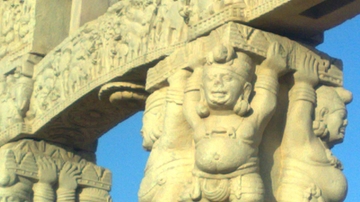
Image
The Great Stupa at Sanchi
The 'Great Stupa' at Sanchi is the oldest stone structure in ancient India and was originally built by the emperor Ashoka the Great in the 3rd century BCE. Its nucleus was a simple hemispherical brick structure built over the relics of the...

Image
Sophia-Wisdom, Celsus Library, Ephesos
A detail of the facade of the Celsus Library in Ephesos (c. 117 CE). The statue represents
wisdom (sophia), an attribute associated with the former proconsul Celsus to whom the building was dedicated.
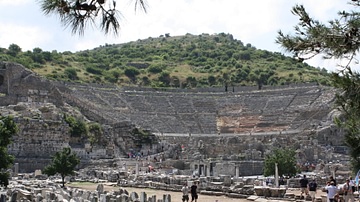
Image
Theatre of Ephesus
The theatre of Ephesus, Turkey, was constructed c. 300 to c. 290 BCE and built into the hill of Panayir Dagi.

Image
Curetes Street, Ephesos
Leading from the Heracles Gate to the Celsus Library, Curetes street (named after the priest class of Ephesos) was lined with colonnaded galleries, various temples, store rooms and houses, and statues of the city's benefactors (of which the...
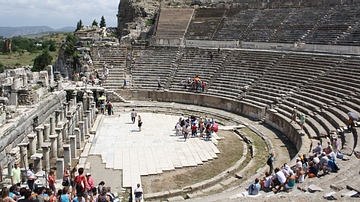
Image
Stage, Theatre of Ephesos
First constructed in the reign of Lysimachos (early 3rd century BCE), the theatre is built into a natural hill and construction evolved through Hellenistic and Roman times. The seated area (or cavea) was larger than a semi-circle and 38m...